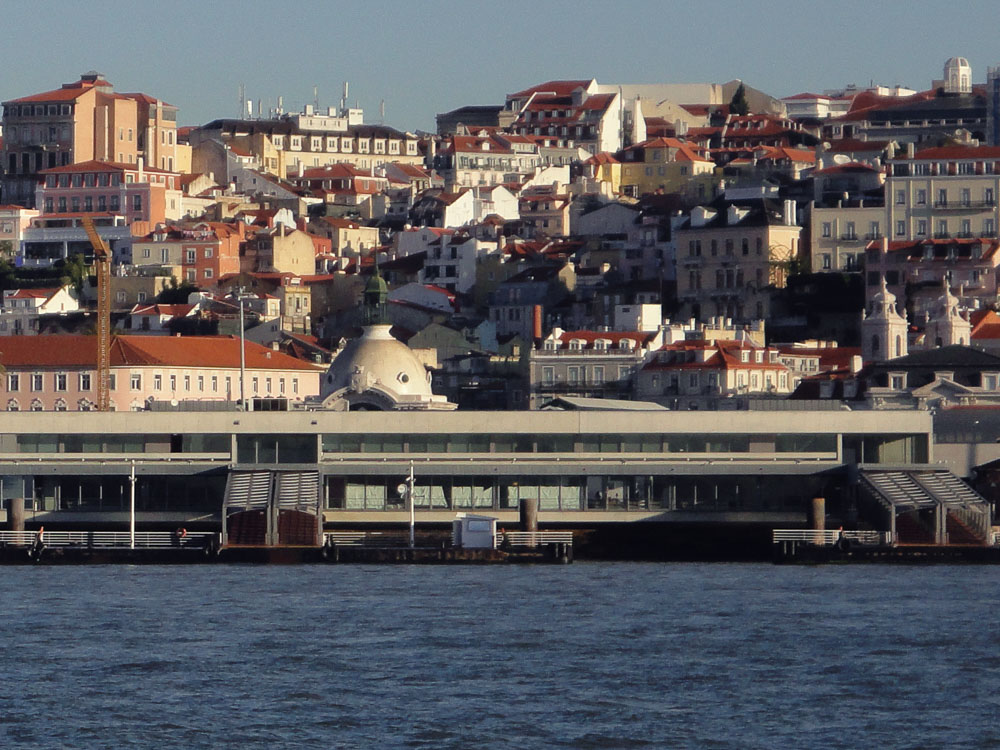Once a neglected docklands area, Cais do Sodré has left behind its past of brothels and shady bars. Today, it’s become one of Lisbon’s most renowned neighborhoods, a place full of trendy bistros, cafes, and modern art galleries.
But don’t worry, it hasn’t completely lost its edgy charm! While it’s no longer known for its red-light district reputation, you can still feel its gritty (yet welcoming) vibe as you wander through its streets and establishments. There’s even a former brothel that’s been transformed into a really cool bar, but I’ll get to that later!
From its waterfront views to its narrow streets lined with colorful buildings, Cais do Sodré is a magnet for visitors from all over the world. So, are you ready? Let’s dive into the highlights of Cais do Sodré together!
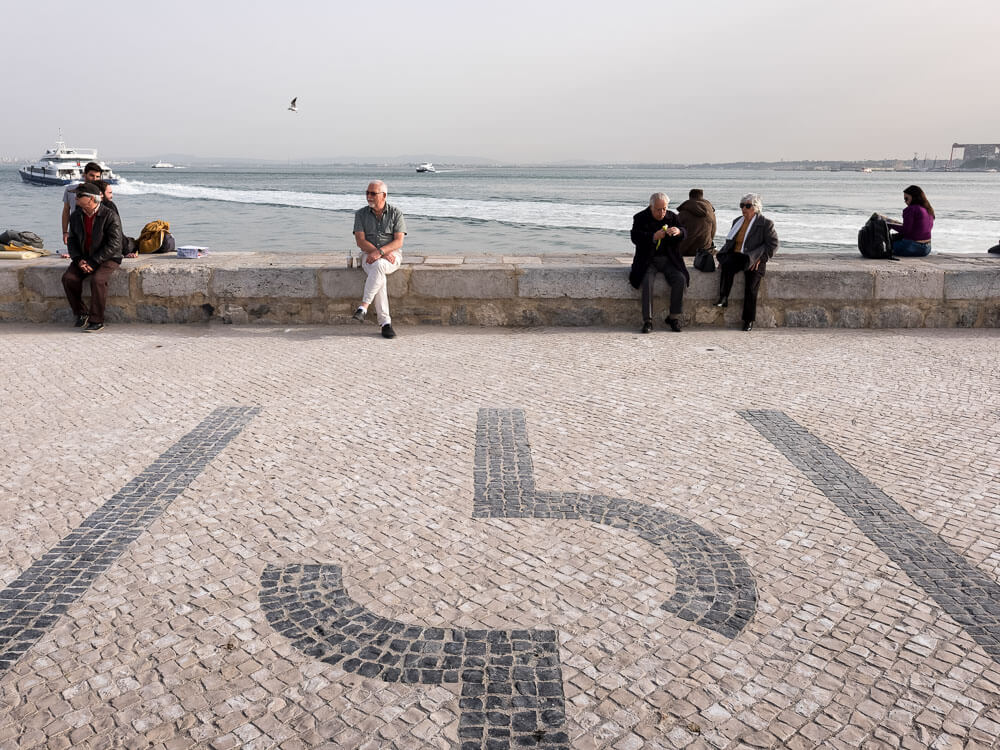
Index
- What to see and do in Cais do Sodré?
- Tours in Cais do Sodré
- Nightlife in Cais do Sodré
- How to get to Cais do Sodré?
- Where to stay in Cais do Sodré?
- Why visit Cais do Sodré?
- History of Cais do Sodré
1. What to see and do in Cais do Sodré?
Cais do Sodré is a neighborhood that combines its maritime past with modern attractions, which includes lots of landmarks, historical streets, bars, buildings and amazing views of the Tagus River. Here are the main things to do in Cais do Sodré:
1.1. Praça de São Paulo

Praça de São Paulo is a landmark in Cais do Sodré, home to the Church of São Paulo, built after the 1755 earthquake in the Pombaline style.
The church’s design takes inspiration from Mafra Palace and features an exterior with white, blue, and pink stone. Inside, you’ll see baroque interior design elements and the iconic ceiling painting depicting the Apotheosis of St. Paul.
As the square’s central feature, there’s a 1848 drinking fountain, which has served as both a water source and an ornamental piece for over a century.
Today, Praça de São Paulo functions as a nightlife hotspot within Cais do Sodré, with lots of outdoor seating areas around its kiosk and nearby bars.
1.2. Ribeira das Naus
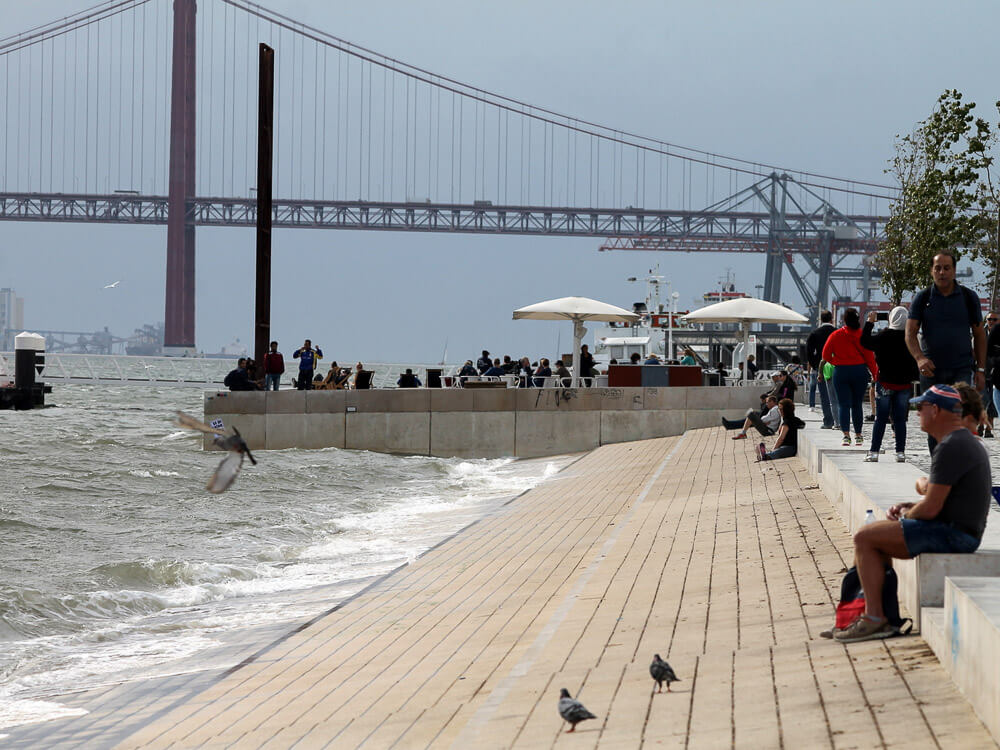
Ribeira das Naus is the waterfront stretch along the Tagus River in Lisbon, extending from Praça Duque da Terceira to Praça do Comércio. It’s the perfect place to see the sunset, particularly between November and January when the sun sets over the water. It’s also a good spot for watching boats pass by.
In summer, Ribeira das Naus becomes an “urban beach.” The steps leading down to the water are popular with sunbathers looking to relax without leaving the city.
A kiosk with a terrace offers drinks and views of the Tejo Estuary. It’s a really nice stop during any stroll along Ribeira das Naus!
1.3. Elevador da Bica

The Elevador da Bica, also known as Ascensor da Bica, is a historic funicular that connects Cais do Sodré with the Bairro Alto neighborhood in Lisbon. Known for its yellow carriages, it not only serves as a means of transport, but also provides passengers with amazing views of the city’s steep streets.
Popular among tourists, the Elevador da Bica often has long queues, especially during peak travel seasons. Despite this, it remains a favored way to experience Lisbon’s topography and history, as it offers a different perspective on the city compared to traditional walking tours or bus rides.
As you ascend or descend in the yellow carriage, you’ll pass by shops, cafes, and buildings that characterize this part of the city. Given its popularity and historical significance, you should definitely add Elevador da Bica to your itinerary!
1.4. Ferry Ride
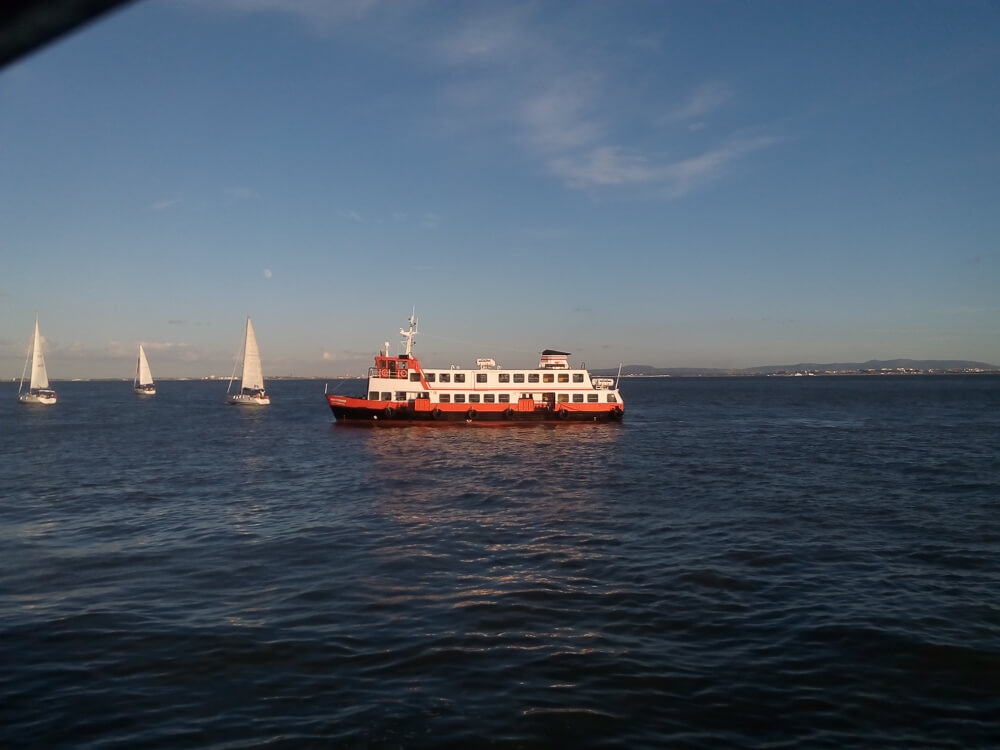
A ferry ride from Cais do Sodré to Cacilhas is a simple and cost-effective way to explore beyond central Lisbon. As you cross the Tagus river, you’ll get unique views of the city’s skyline, and even pass by the 25 de Abril Bridge.
The crossing takes around 10 minutes, and the ferries run frequently with several departures per hour from early morning until late at night. To avoid crowds, it’s best to skip rush hour.
Once you arrive in Cacilhas, buses are available at the terminal and can take you directly to landmarks like the Cristo Rei Statue. For more tips on what to do in Cacilhas, check out this guide.
2. Tours in Cais do Sodré
Exploring Cais do Sodré in Lisbon through guided tours is a good idea for a couple of great reasons: they provide insider knowledge, access to local spots, cultural immersion, safety and comfort. So, here are my recommendations:
- Lisbon Pub-crawl: this tour will take you through four bars with unlimited beer and sangria. It includes free shots at each stop and nightclub entry, making it a fun way to experience the nightlife of Cais do Sodré.
- Lisbon Non-Alcoholic Pubcrawl: for those who prefer non-alcoholic options, this tour offers soft drinks and exclusive mocktails, with all beverages covered. Participants will enjoy skip-the-line privileges and club entry while exploring Bairro Alto, Pink Street, and Cais do Sodré. The dress code is casual chic, no sportswear or flip flops.
- Lisbon Street Art Tour: if street art interests you more than nightlife, this could be a great option for you. This 4-hour tour explores both local and international artworks supported by initiatives like the Crono Project. You’ll see how neglected buildings have been transformed as your guide leads you off-the-beaten-track in this evolving urban art capital of Europe.
3. Nightlife in Cais do Sodré

3.1. Pink Street
Pink Street, also known as Rua Nova do Carvalho, is Lisbon’s nightlife hub. Located in the Cais do Sodré district, this pedestrianized street was painted pink in 2013 and now has become a popular spot for anyone looking to enjoy a night out.
With various bars and clubs, from cocktail lounges to traditional Portuguese taverns, Pink Street offers something for everyone. Outdoor tables line the pink pavement, creating a fun atmosphere, where people can socialize and enjoy the neighborhood.
3.2. Pensão Amor
Pensão Amor, located in central Cais do Sodré, is a bar set in a former brothel. The venue keeps its historic charm with red wallpaper and unique décor, offering visitors a look into the past while hosting burlesque and pole dancing performances.
Whether you’re stopping by for a cocktail or staying for an evening show, Pensão Amor provides a very unique experience!
3.3. Musicbox
Musicbox Lisboa is a club in Lisbon that opened in 2006, combining a concert hall with a dance environment. Situated in Lisbon’s Cais do Sodré neighborhood, it actually plays a central role in the city’s cultural landscape, fostering new projects and emerging cultural trends.
So, if you’re looking to have a great night out and enjoy diverse programming, then this is the place for you!
4. How to get to Cais do Sodré?
Cais do Sodré is located just west of central Lisbon, right by the river, about 1.5km from the Baixa neighborhood. It’s reachable by metro, as it’s the final stop on the green line, and by trams number 15 and 25.
From the airport, you can take the metro by switching from the Red Line to the Green Line or use Aerobus services. Besides that, Cais do Sodré is well connected with various destinations via the Cascais Line (Linha de Cascais), offering diverse travel options within Lisbon and beyond.
5. Where to stay in Cais do Sodré?
Cais do Sodré is a great place to stay, near the city center and close to lots of nightlife options. So, if you want to experience all of this exciting neighborhood, these are my hotel recommendations:
- Lx Boutique Hotel: this hotel offers themed rooms with views over Lisbon and the Tagus River, each including air conditioning, a mini-bar, a private bathroom, and free Wi-Fi. It also provides a 24-hour front desk service, laundry services, and an airport shuttle. There are historical sites and museums within a 10-minute walk, while nearby restaurants, bars and cafés are just five minutes away.
- Asul B&B: located about a 10-minute walk from Cais do Sodré, this bed-and-breakfast offers luggage storage, airport transfers, and bike rental services. The units include private bathrooms, free Wi-Fi, seating areas with fully equipped kitchens featuring dishwashers, ovens, microwaves as well as coffee machines. Some rooms have balconies with river views.
- Independente Bica: this hotel is located near Commerce Square, featuring express check-in/check-out services along with non-smoking rooms equipped with kettles, private bathroom, flat-screen TV, and air-conditioning. There are various breakfast options at their on-site restaurant, which also serves meals and drinks.
6. Why visit Cais do Sodré?
If you’re still wondering if you should visit Cais do Sodré, let me tell you why you’d regret not visiting it.
The first thing is: the food scene is fantastic. You can try traditional Portuguese dishes or go for something more modern at places like Time Out Market. There are plenty of bars and cafes around too, so you’ll always find somewhere to eat or drink.
And, if you like going out, Cais do Sodré really comes alive at night. Pink Street is famous for its bars and clubs, perfect if you enjoy nightlife. Whether you want to dance or listen to live music, you’ll definitely find something for you there!
Besides that, if you’re into culture, there are galleries and theaters to explore.
Plus, Cais do Sodré is close to other cool neighborhoods like Alfama, Baixa, and Bairro Alto. It’s very easy to get around on foot or by public transport, so you can see more of what Lisbon has to offer.
7. History of Cais do Sodré
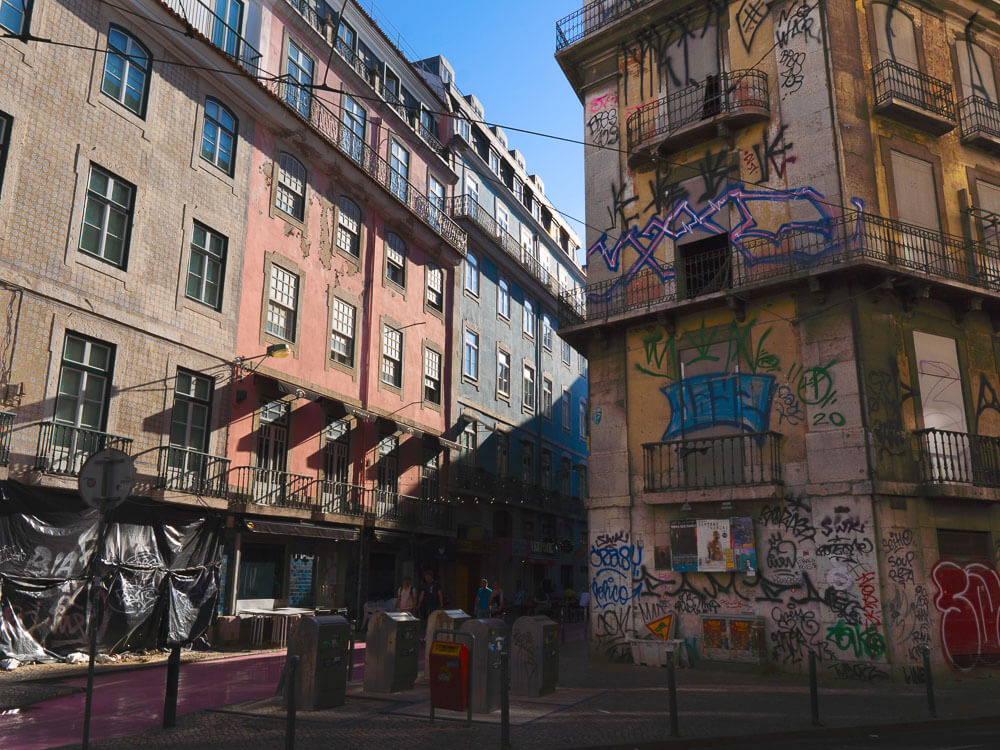
Cais do Sodré’s history goes back to medieval times, when it was the fishing village of Ribeira Nova. Then, during the Age of Exploration, it became an important place for maritime trade and expeditions, serving as a launch point for ships heading to distant lands.
In 1755, the neighborhood suffered significant damage from the devastating earthquake that struck Lisbon. Despite this setback, Cais do Sodré was rebuilt and modernized with new architectural styles and urban planning that still define its appearance today.
During the 19th and 20th centuries, Cais do Sodré experienced a lot of industrialization, which first brought economic growth, but eventually experienced decline as the industries and commerce shifted elsewhere.
However, in recent years, the area has experienced a revival. It’s been transformed from a declining neighborhood into one of Lisbon’s cultural and nightlife districts, blending maritime heritage with bars, restaurants and entertainment venues.
Ready to explore Cais do Sodré?

From its start as a medieval fishing village to its role in the Age of Discoveries, Cais do Sodré has a very long history that still echoes through its streets.
Today, though, the area has moved from its historic roots into a modern district that offers a diverse experience, especially when it comes to great food and nightlife, with bars and clubs for partying until the sun comes up.
It’s precisely this combination of history, culture, cuisine, and nightlife that has made this neighborhood so popular among both tourists and locals. And that’s why you definitely need to visit Cais do Sodré during your time in Lisbon!

